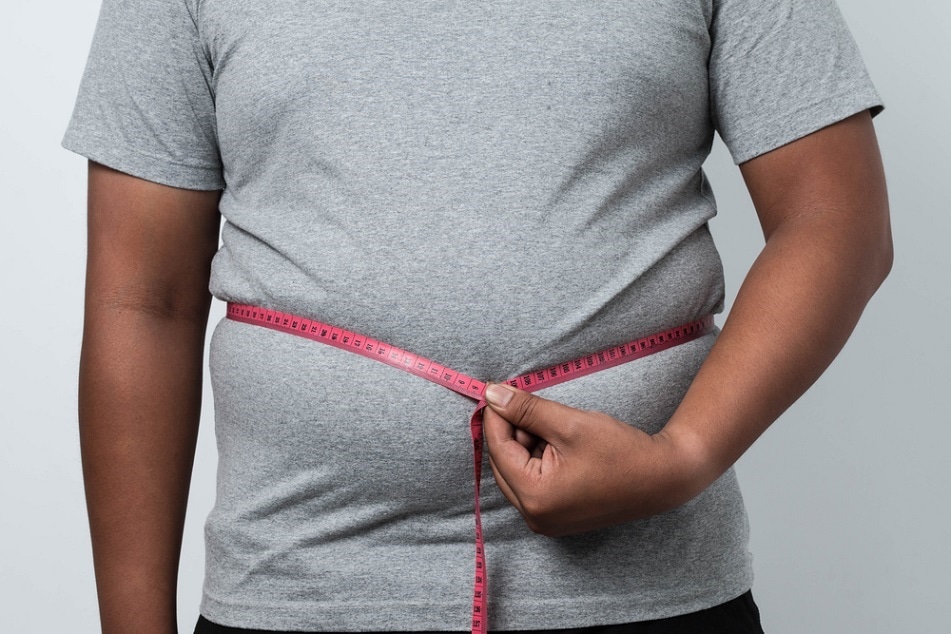I had zero excess fat at the time of my stroke. I never fell into any of the standard risk categories for stroke. My stroke was only preventable if my Dads' doctor had warned him to have his children tested after he was found to have 80% carotid blockage.
Many people at risk of heart disease and stroke have excess abdominal fat
Nearly two-thirds of people who are at high risk of cardiovascular
disease and stroke have excess fat around the middle of the body
(central obesity), according to findings from the European Society of
Cardiology (ESC) EUROASPIRE V survey.

The survey also showed that of those taking lipid-lowering medication, less than half (43%) reached the LDL cholesterol target of less than 2.5 mmol/L and of those taking antihypertensive medication, less than half attained the blood pressure target of 140/90mmHg. Furthermore, many people who were not taking either form of treatment, had high blood pressure and LDL cholesterol levels.
Among individuals taking medication for type 2 diabetes, 65% reached the glycated haemoglobin (HbA1c) target of less than 7.0%
Chair of the EUROASPIRE Steering Committee, Kornelia Kotseva: "The survey shows that large proportions of individuals at high risk of cardiovascular disease have unhealthy lifestyle habits and uncontrolled blood pressure, lipids and diabetes."
The survey included 2,759 respondents across 78 general practices in 16 primarily European countries. The participants were interviewed and examined between 2017 and 2018 using standard methods and instruments.
All of them were aged under 80 years and had no history of cardiovascular disease, but were at high risk of the disease, which was defined as having a high blood pressure or cholesterol level and/or diabetes.
Almost two-thirds (64%) were found to be centrally obese, which was defined as a waist circumference of 88 cm or more for women and 102 cm or more for men. Thirty-seven percent were overweight (BMI 25-29.9 kg/m2) and 44% classified as obese (BMI 30 kg/m2 or higher). Almost one-fifth smoked and only 36% engaged in physical activity for the recommended minimum of 30 minutes, five times per week.
Kotseva says GPS should should proactively look for cardiovascular risk factors beyond the ones they know about and always investigate obesity, cholesterol, blood pressure, diabetes, unhealthy diet and smoking: “People are often unaware that they need treatment. For example, they visit their GP for their diabetes but do not know they also have high blood pressure.”
Kotseva adds that many people included in the survey who had high blood pressure and cholesterol were not taking any treatment for these conditions.
"These data make it clear that more efforts must be made to improve cardiovascular prevention in people at high risk of cardiovascular disease,” she concludes.

khomkrit sangkatechon | Shutterstock
The results of the survey are being presented today at the World
Congress of Cardiology & Cardiovascular Health in Dubai, United Arab
Emirates.The survey also showed that of those taking lipid-lowering medication, less than half (43%) reached the LDL cholesterol target of less than 2.5 mmol/L and of those taking antihypertensive medication, less than half attained the blood pressure target of 140/90mmHg. Furthermore, many people who were not taking either form of treatment, had high blood pressure and LDL cholesterol levels.
Among individuals taking medication for type 2 diabetes, 65% reached the glycated haemoglobin (HbA1c) target of less than 7.0%
Chair of the EUROASPIRE Steering Committee, Kornelia Kotseva: "The survey shows that large proportions of individuals at high risk of cardiovascular disease have unhealthy lifestyle habits and uncontrolled blood pressure, lipids and diabetes."
The survey included 2,759 respondents across 78 general practices in 16 primarily European countries. The participants were interviewed and examined between 2017 and 2018 using standard methods and instruments.
All of them were aged under 80 years and had no history of cardiovascular disease, but were at high risk of the disease, which was defined as having a high blood pressure or cholesterol level and/or diabetes.
Almost two-thirds (64%) were found to be centrally obese, which was defined as a waist circumference of 88 cm or more for women and 102 cm or more for men. Thirty-seven percent were overweight (BMI 25-29.9 kg/m2) and 44% classified as obese (BMI 30 kg/m2 or higher). Almost one-fifth smoked and only 36% engaged in physical activity for the recommended minimum of 30 minutes, five times per week.
Kotseva says GPS should should proactively look for cardiovascular risk factors beyond the ones they know about and always investigate obesity, cholesterol, blood pressure, diabetes, unhealthy diet and smoking: “People are often unaware that they need treatment. For example, they visit their GP for their diabetes but do not know they also have high blood pressure.”
Kotseva adds that many people included in the survey who had high blood pressure and cholesterol were not taking any treatment for these conditions.
"These data make it clear that more efforts must be made to improve cardiovascular prevention in people at high risk of cardiovascular disease,” she concludes.

No comments:
Post a Comment